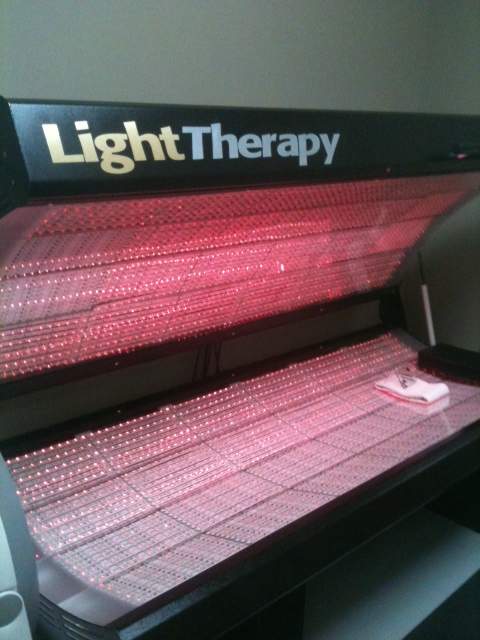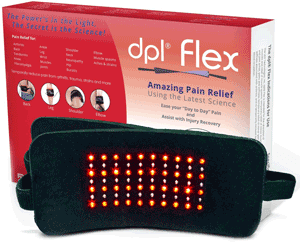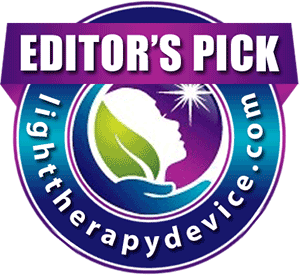In 1801, Johann Wilhelm Ritter was the first to discover lightwaves beyond the violet end of the spectrum, which he called chemical rays. The wavelength was later known as ultraviolet light. British scientists Blunt and Downes became aware of the antimicrobial properties of sunlight in 1877. However, Marshall Ward was the researcher who determined that ultraviolet light rays from the sun were responsible for the benefit.

Table of Contents
Antimicrobial Characteristics
Thanks to the experiments and discoveries made by early scientists, ultraviolet light continues being used as a medical treatment today. With the advancements of modern-day technology, researchers now know that UV light damages the DNA in pathogens, which prevents them from multiplying and thriving. The list of susceptible bacteria include:
- Bacillus anthracis
- Escherichia coli
- Salmonella
- Shigella dysentariae
- Viruses causing hepatitis and influenza
Ultraviolet Light Therapy Wavelengths
Ultraviolet light therapy involves exposure to UVA or UVB rays emitted by a manmade source. However, different wavelengths are preferred to treat specific conditions.
- UVA rays fall between 320 to 400 nm on the light spectrum and are commonly used in combination with topical medications to provide psoralen or PUVA therapy. UVA rays also penetrate deeper into the skin.
- Broadband UVB rays fall between the 290 to 320 nm spectrum range. These wavelengths are only used where there are no skin folds.
- Narrowband UVB rays lie between the 310 to 315 nm range is often used to treat many different skin disorders.
- Monochromatic UVB rays are located on a wavelength of 308 nm and are emitted via an excimer laser.
Conditions Benefiting from UV Light Therapy
Atopic Dermatitis
Statistics indicate that approximately 17 percent of the population live with the skin condition that is associated with topical allergies. UVA-1 or narrowband UVB rays are useful for treating the inflammatory skin problem. The ultraviolet rays are toxic to the T-lymphocytes that overreact and cause the condition. By eliminating the immune cells from the areas being treated, the inflammation disappears and skin cells resume normal replication.
Blood Pressure Regulation
Exposure to UVA light rays triggers the production and release of nitric oxide, which is a natural vasodilator. In this way, the chemical compounds enhance blood circulation while preventing cholesterol deposits from adhering to vessel walls. Nitric oxide also prevents blood vessel wall thickening.
Fibromyalgia
Patients suffering from fibromyalgia benefit from ultraviolet light exposure. The anti-inflammatory properties and immune-interfering properties of UV rays are thought to be the contributing factors that lead to pain relief. These properties of ultraviolet light therapy are also being investigated as a potential treatment modality for multiple sclerosis patients.
Localized Scleroderma
UVA-1 rays are sometimes used to treat patients suffering from the disfiguring disease. Researchers theorize that the ultraviolet rays eradicate the Langerhans and mast cells that cause the disorder.
Psoriasis
Narrowband UVB light therapy has been shown to be the most effective in reversing the effects of psoriasis. The rays eliminate the T-lymphocytes, which cause the inflammation and irritation. The lack of T-cells also prevents skin cells from receiving abnormal replication signals. In this way, normal skin cell replication resumes.
Vitamin D Production
Individuals may benefit from exposure to UVB rays in order to encourage the body to make vitamin D. Deficient amounts of the nutrient may be due to a lack of adequate sunshine in certain locations. For others, their body has difficulty absorbing the rays and producing vitamin D.
Vitiligo
The skin disorder involves a lack of pigment in areas of the skin, which creates a blotchy appearance. The problem is either due to an abnormal immune reaction or a genetic predisposition that damages or destroys the pigment-producing melanin cells. Monochromatic or narrowband UVB stimulate melanin cells to repigment affected areas.
Wound Healing
The antimicrobial effects of UV light therapy are useful for preventing or treating wound infections and to promote tissue healing.
UV Light Therapy Devices
Tanning beds are the most widely recognized type of device that emits ultraviolet light. Devices available for in-home use include free-standing floor lamps, free-standing tabletop lamps and light panels. Hand-held wands are useful for treating small areas that may include wounds.
Contraindications
Ultraviolet light therapy is not recommended for anyone having retinal diseases in the eye, which are known to occur in diabetic patients. Patients having a history of skin cancer, lupus or who take medications that cause photo-sensitivity are also not candidates for treatment.
Side-effects of UV Light Therapy
Initial exposure may cause burning and reddening similar to a sunburn. Chronic exposure to ultraviolet light causes premature skin aging, which increases the risk of developing skin cancer years later. In rare instances, some people exhibit an allergic reaction by developing eczema and hives within hours after exposure. However, the symptoms typically subsides without intervention. As UV light stimulates melanocytes, hyperpigmentation may occur. UV light therapy may trigger manic episodes in people diagnosed with affective seasonal or bipolar disorders.



How does one find this therapy. Like the bed Ultra Light Therapy?